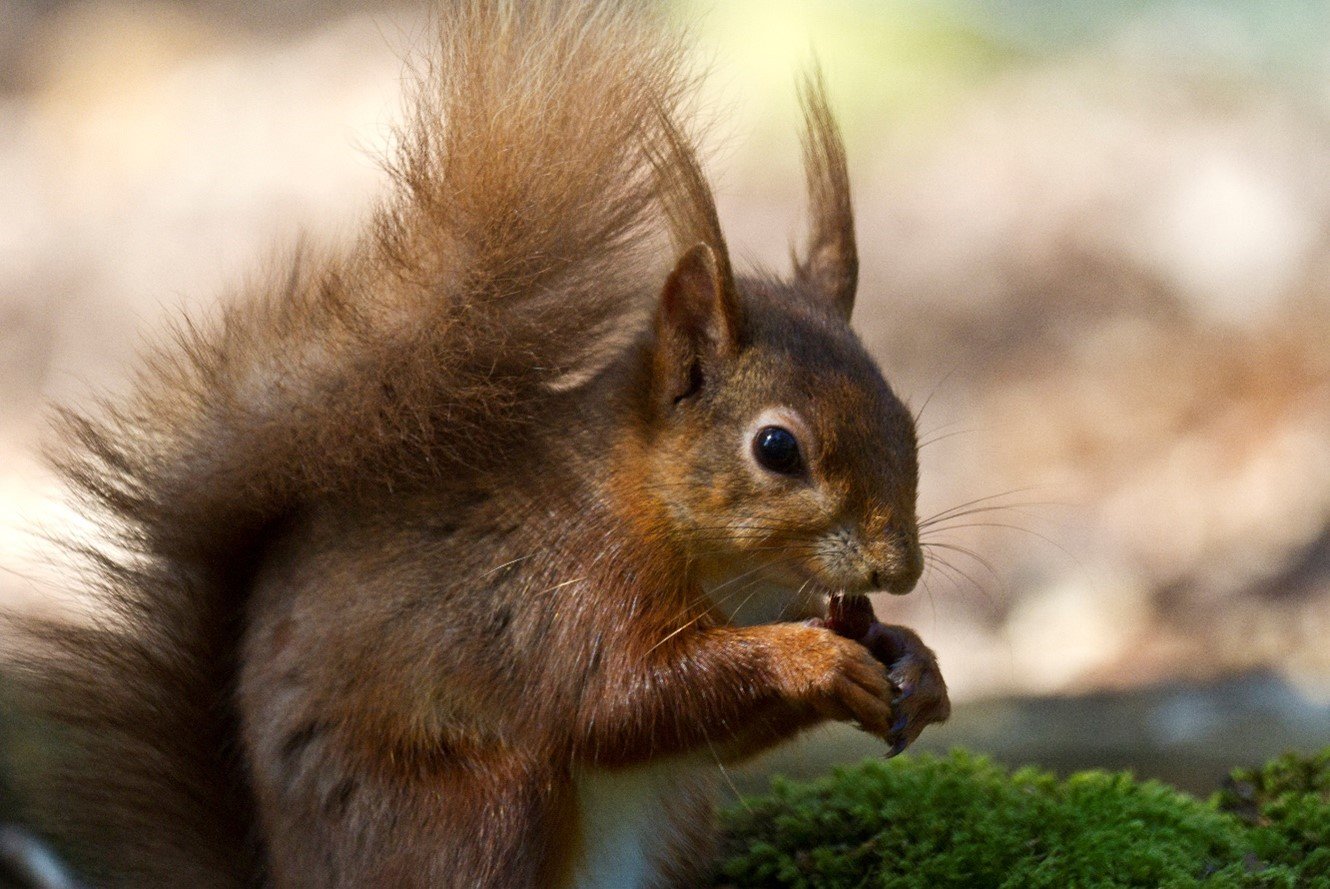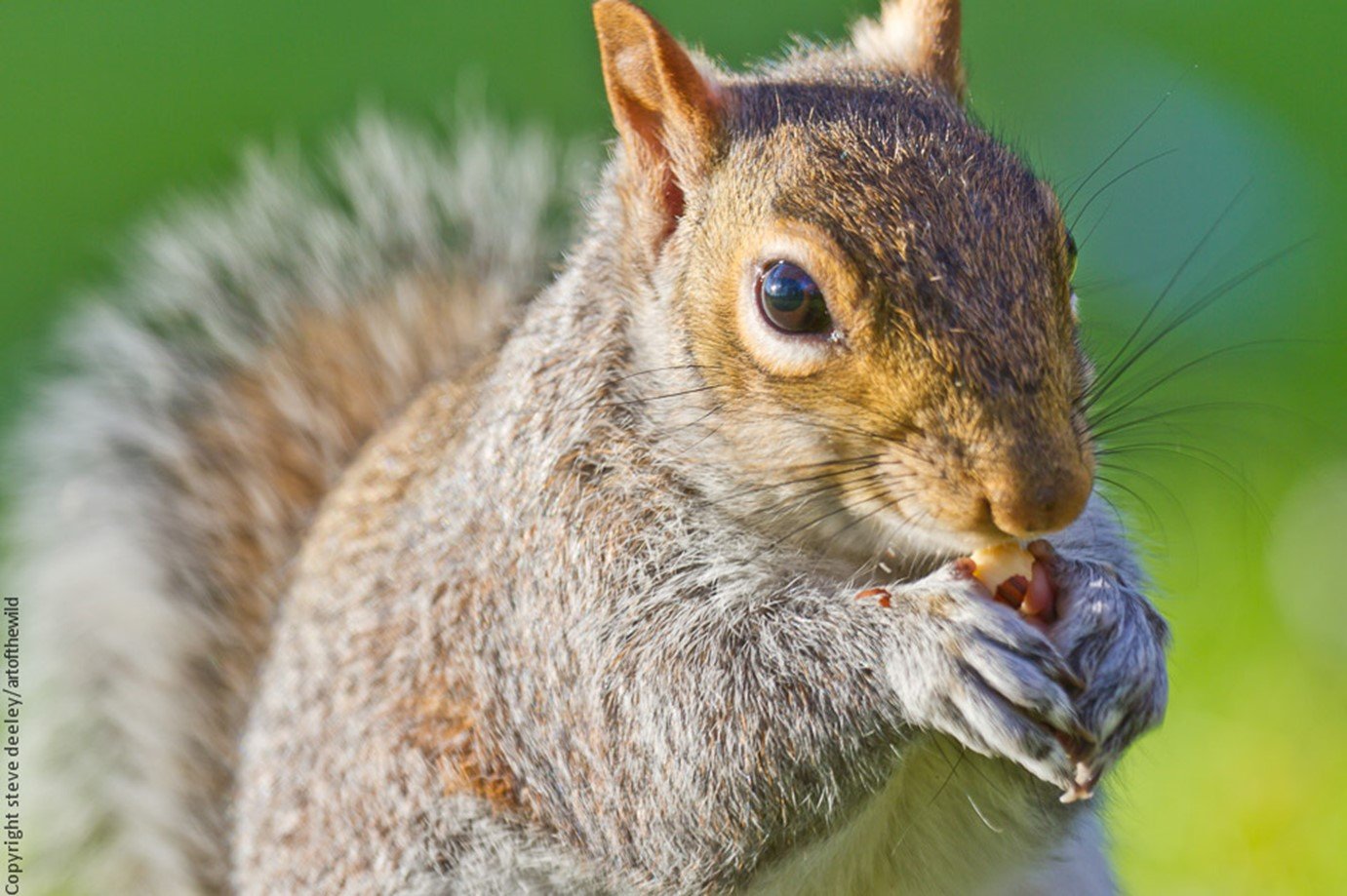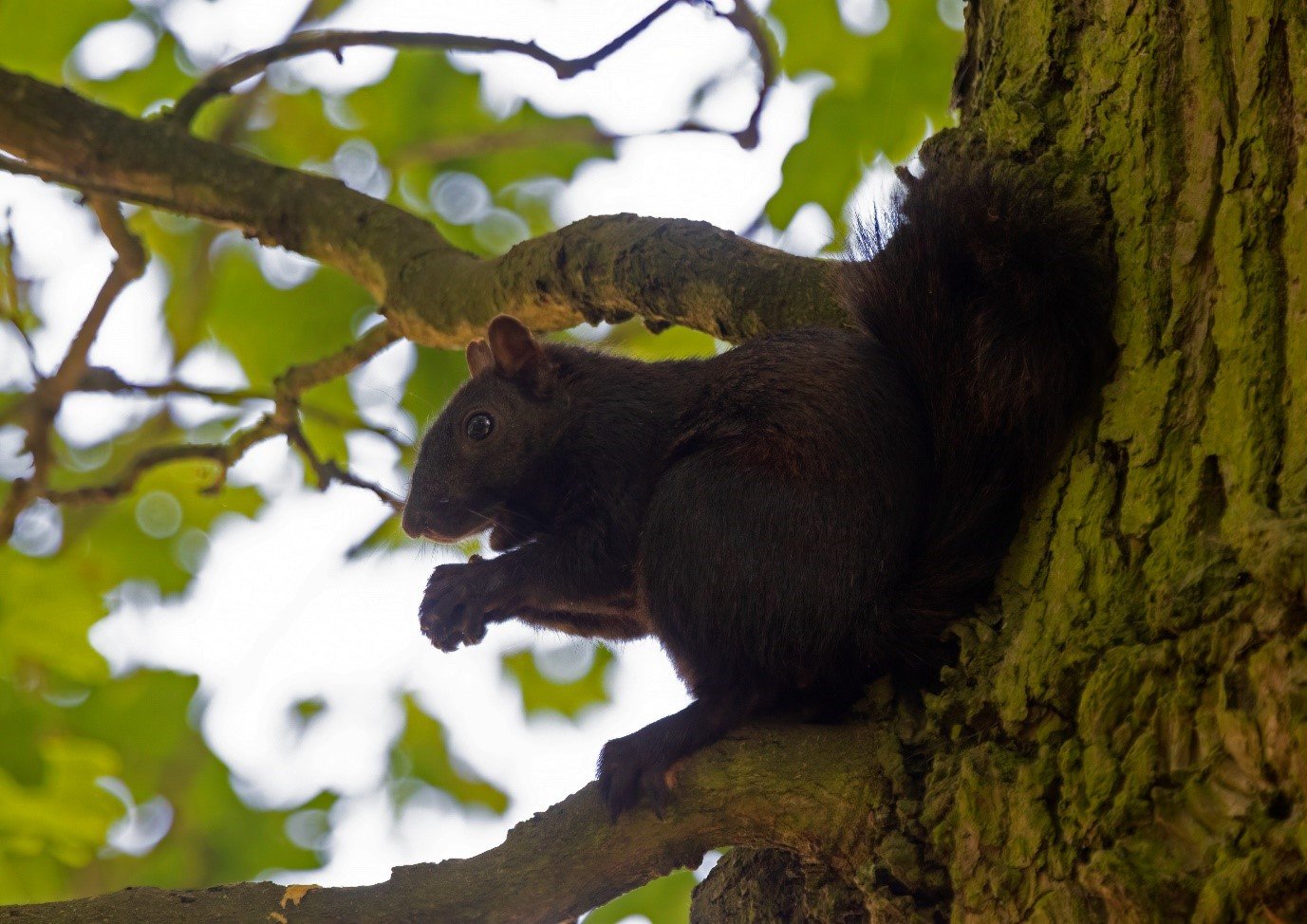What are grey and black and red all over?
Nature writer and photographer, Steve Deeley, looks at the different squirrels we have in Britain in this guest blog
We're all familiar with that beloved British icon, our native red squirrel, now sadly endangered. We're also very familiar with its cousin, the grey squirrel, which is largely responsible for the red squirrel's downfall.

Greys are a North American animal, introduced as an ornamental species in English country estates in the 1820s. They spread quickly and now vastly outnumber our red squirrels. Carrying a virus, squirrel pox, which is usually fatal to our red squirrels, greys are also able to eat hazelnuts while they are unripe, something reds can't do, enabling them to remove potential food before the reds can eat it.

But now the domination of the grey squirrel is under threat from the squirrel on the block. Or at least, that's how it might look. Because there's a new squirrel in town, and it could be coming to a place near you.
The black squirrel.
Yes, that's right. It's a squirrel, and it's jet black.
With a population of perhaps 25,000-30,000, the UK’s black squirrel population is still smaller than that of our red squirrels, but it is growing. Originally confined to the Letchworth area, it is starting to become the most common colour of squirrel you will see in some areas of Cambridgeshire and Hertfordshire. Look online and you'll see lurid newspaper headlines about black squirrels being 'faster' and 'more aggressive' than our greys. But like many such attention-grabbing headlines, they’ve got it wrong. Because research has shown something unexpected about our grey and black squirrels.
They are exactly the same animal. DNA analysis has shown them to be the same species. So why have our greys suddenly started turning black?

The answer is probably down to a single squirrel.
In the USA, grey squirrels mated with another closely-related North American squirrel, the "fox squirrel". Ironically, the fox squirrel typically has a reddish-grey colour and looks a little like how you would imagine the offspring of a red and grey squirrel to be. But at some point, a mating between a grey squirrel and a fox squirrel produced a genetic defect. A part of the grey squirrel's colour gene went missing in its offspring, turning them from grey to black. You can read more about the complex genetics involved here: https://pubmed.ncbi.nlm.nih.gov/24534267/
So now we have a population of black grey squirrels in North America.
Enter the private zoo collectors again. It is believed that a single squirrel with the mutation was brought into a private zoo in the Letchworth area in the early 1900s. It escaped into the local grey squirrel population, and the gene defect started to spread. As more and more ‘standard’ grey squirrels bred with black grey squirrels, so the defect spread. Many of the offspring of grey/black pairings are still grey, so we will not be losing our grey squirrel anytime soon, but black is becoming increasingly common. Grey greys and black greys seem able to co-exist perfectly happily
So there you have it. And this is your chance to set a really evil question for your next pub quiz: What are grey and black and red all over? Answer: squirrels.
Read next: Raiders of the fox scat
